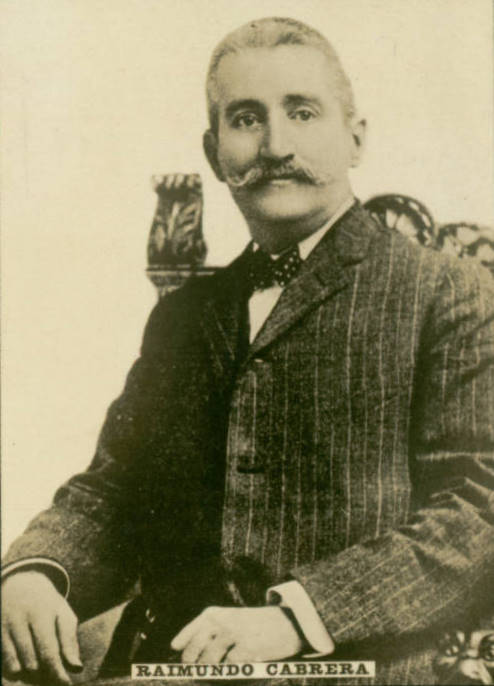3.4.5 Raimundo Cabrera y Bosch (1852 – 1923), journalism and political texts

Raimundo Cabrera began his studies in Güines and moved to Havana to complete his high school studies at the Colegio de San Francisco de Asís. He was imprisoned after being captured while trying to join the Mambi troops. Later, he traveled to Spain and earned a law degree there. He founded the Liberal Autonomist Party and remained there until 1893. During the 1895 conflict, he lived in Europe and the United States.
He returned to Cuba after the establishment of the Republic. During this period, he collaborated with the Casa de Beneficencia (House of Charity), the Economic Society of Friends of the Country, and was a founding member of the Cuban Academy of History. He practiced law and continued his work as a journalist, for which, in addition to occasionally signing his articles with his own name, he also used the pseudonyms Jorge, Henry King, JC Trevejos, El Andaluz, Paco Mantilla, Un poeta del 68 (A Poet of ’68), and Coronel Ricardo Buenamar.
This work began in the town of Guines, as editor and director of the newspaper “La Unión.” However, his career was not limited solely to the press, where he expressed his political ideas. In 1887, he published the book “Cuba y sus juezes” (Cuba and its Judges). This book is part of the tradition of defending Cuban values against biased foreign interpretations, in this case reflected in the book “Cuba y su gente” (Cuba and its People) by the Spaniard Francisco Moreno.
The work explicitly emphasizes his autonomist affiliation, from whose perspective the Ten Years’ War is characterized as a mistake, albeit motivated by colonial mismanagement. The author uses a variety of historical sources and data to support his arguments, all of them imbued with a tone of passionate defense of Cuban identity, in a style devoid of rhetoric but not devoid of literary value. Despite the author’s autonomist stance, this is a text of profound patriotic spirit.
During his stay in New York, he founded the magazine “Cuba y América” in 1897, which was first published fortnightly, then weekly, and later monthly, until it ceased publication in New York in 1898 and moved to Havana.
In a few lines, its objective was defined: “it will try to respond within its sphere to the state of mind, to the needs that are manifested in emigration, and alongside the newspapers that with the most authority and titles carry out the teaching of combat in New York and in different places in America – also fighting modestly and resolutely -, it will be in another order of ideas and work, like the organ in which lovers of literature and of political and critical studies, reflect their lucubrations in these bitter days of uncertainty and exile.”
The founding of this newspaper reflects the radicalization of Raimundo Cabrera’s thinking after his break with autonomy in 1893, as well as his Americanist vocation, which he maintained upon his return to Cuba in 1898, precisely with the transfer of this newspaper to the island and the expansion of its cultural profile in line with changing times. Whether as director or through collaborations, he was associated with numerous press outlets, such as El Tiempo, El País, La Habana Literaria, El Figaro, La República de Cuba, Revista Bimestre de la Habana, and El Triunfo, among others.








